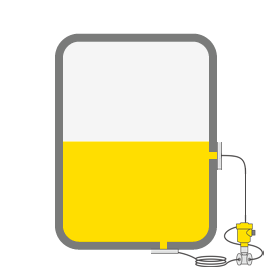Calculating Density with Differential Pressure
In a recent post we discussed how temperature can introduce error to a hydrostatic level measurement. Specifically, when temperature changes, the density of the fluid being measured can also change, which means the level calculation being done by the instrument is being done with the wrong density value, creating an inefficiency and opening the door to a potential overfill. That’s a major problem, but what’s the solution? What is an operator to do when they know the density is constantly changing (either due to temperature or process conditions) and the level output is incorrect? That is our topic today.
Do the math
As long as liquid covers both mounting ports of a differential pressure sensor, users can calculate the fluid's density.
A differential pressure sensor measures the pressure at two different points. As long as these two points are covered by the fluid, the height of the measurement becomes the distance between the mounting ports and the pressure used for the calculation is the difference between the two, or the DP. So now that we have the level (distance between the ports) and the pressure (the differential pressure measurement), the only variable left in the basic hydrostatic pressure formula is density, which we can now solve for using the other two variables. Our faith in the greatness of math is restored!
Conclusion
Export this article
Download as PDFShare this article
Comments ({{comments.length}})
{{getCommentAuthor(comment, "Anonymous")}} {{comment.timestamp | date : "dd.MM.yyyy HH:mm" }}
{{comment.comment}}






